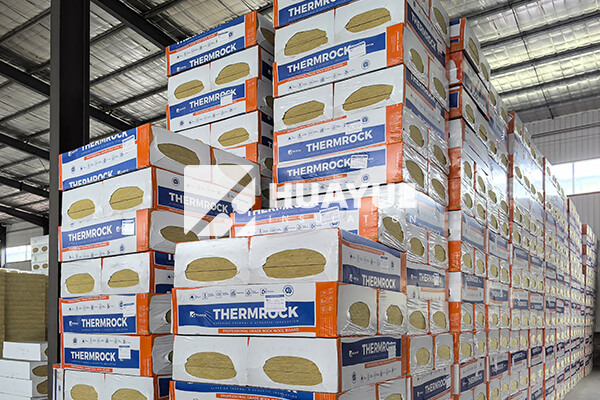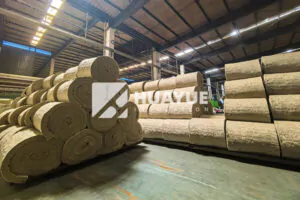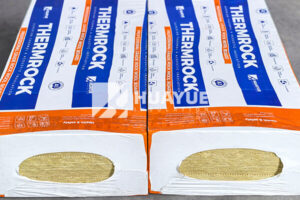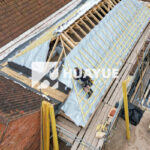What Is the Density of Mineral Wool Insulation and Why Does It Matter?
The success of your insulation project can depend on a small but crucial number: density.
The density of mineral wool insulation usually ranges from 40 to 200 kg/m³, depending on the product and its intended use. Higher density means better fire resistance, soundproofing, and thermal performance.

If you care about the safety and comfort of your building, you need to know what density means for mineral wool and how to pick the right one. Let’s see what happens when this detail is ignored, and how to avoid costly mistakes by understanding it well.
How Does Density Affect the Performance of Mineral Wool Insulation?
Ignore density and you might face drafty rooms, high energy bills, or even fire risks.
Higher density mineral wool delivers better heat retention, more sound isolation, and improved fire safety because of its tightly bound fibers. Lower density products may cost less, but they often fail in tough scenarios like warehouses or industrial tanks.

To break this down, let’s look at performance characteristics:
| Density (kg/m³) | Insulation Type | Key Benefit | Best Use Case |
|---|---|---|---|
| 40–60 | Loose-fill or Light Batts | Flexibility | Interior walls, partitions |
| 80–120 | Semi-rigid Slabs | Midrange performance | Residential/Commercial walls |
| 150–200 | Rigid Boards | High strength, fire | Industrial/Exterior facades |
If you insulate a large chemical tank, for example, a high-density slab resists compression and holds its shape even when exposed to vibration and pressure changes. For ceilings or attics where heavy loads are rare, light batts may work.
I remember a project where the choice of low-density batts in a humid environment led to sagging. Water vapor passed through, making the insulation useless. Upgrading to higher density solved the problem and met fire safety code.
Does Density Impact Installation and Handling?
Light insulation can seem easier to install. But sometimes, it isn’t.
High-density mineral wool is heavier and tougher to cut, but it doesn’t fall out of place or move once installed. Lighter batts fit into odd corners quickly but sometimes compress too much or need extra support.

The tradeoff means you must think about site labor. When you push high-density slabs into wall systems, the product stays put, sealing off any air leaks. With low-density, gaps and slumps can appear over time, risking energy performance.
In my experience, the right tools—like serrated knives or specialized saws—make rigid boards easier to cut. I help my partners pick the right density for their crew’s skills and the project’s demands, saving hours on installation and avoiding callbacks for fix-ups.
What Is the Relationship Between Density and Cost?
People worry higher density will break their budget. Does it always cost more to go denser?
Prices go up as density rises because you pack more raw material and manufacturing into every board. However, higher efficiency, fewer repairs, and a longer lifespan can offset the upfront expense in many cases.
If you insulate a chemical plant’s tank system, you may pay more for denser boards, but you could spend less in the long run thanks to lower maintenance costs and insurance savings.
I helped a client justify the upgrade by modeling total ownership cost. The result: the high-density product paid for itself in just three years, thanks to less heat loss and fewer maintenance shutdowns.
How Should You Choose the Right Density for Your Project?
It’s easy to get lost in the numbers. So how do you actually choose?
Think about where and how the insulation will be used. Consider load, temperature, noise, and fire safety. Never just grab the cheapest option. Ask about fire codes and the potential for water exposure or high impacts.
Here’s a quick checklist:
- Wall, attic, or tank? (Determine load)
- Fire resistance needed?
- Noise level concern?
- Budget constraints?
Matching density to your requirements is the best way to extend building life and avoid expensive surprises later. Whenever possible, get advice from an experienced supplier who understands both the materials and your project’s unique needs.
Conclusion
By understanding density, you get insulation that’s safer, lasts longer, and performs better for your specific application.
You may also be interested in:
Ready to Get Started?
Get in touch with our experts for personalized solutions tailored to your needs.
Get Free QuoteLatest Articles
Let's Work Together
Ready to take your business to the next level? Get in touch with our team of experts and let's discuss how we can help you achieve your goals.
Get Free Solutions







